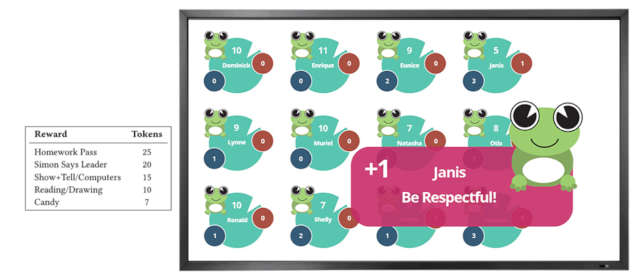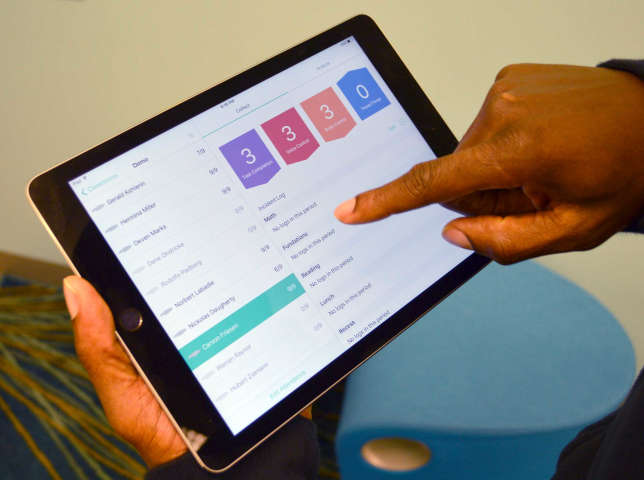Tracking Student Behaviors Interactively
A new study finds using an interactive display to track student behaviors can support behavior management strategies.

In order to study how technology can improve behavioral management, researchers at the University of Michigan and Drexel University have developed a classroom display prototype for teachers that allows students to track their behaviors throughout the school day. Through using a token-based economy, teachers are able to reward students for positive behaviors in the classroom. Gabriela Marcu, an assistant professor at the University of Michigan School of Information, will present findings from the prototype study at the Pervasive Health 2019 conference May 23.
“For classroom staff, our prototype has an interesting potential for technology because technology is consistent and teachers doesn’t get overwhelmed,” said Marcu. “We came up with the idea of the display where if teachers can be accurate with giving a child the point then we can take care of displaying that and giving feedback.”

Every time that a student receives a token delivered to a student there is a splash sound and a pop-up graphic naming the student and behavioral category in which they earned the token. The design of the prototype aims to help reinforce student behaviors through automated feedback. The tokens also allow teachers to monitor unique behaviors for each student which is designed to be more specific and helpful for students.
When it comes to giving punishments, the researchers devised a system where persistent disruptive behavior or undesired behavior would lead to students being placed on a “time-out” that would make them temporarily unable to earn tokens. The prototype was tested in a regular first-grade classroom with 19 students.
One unintentional side effect of the prototype was that students were so engaged with the platform that they advocated for each other to alert the teacher when their peers were not awarded with tokens that they deserved. “I don’t think that we had seen that behavior from the regular points system,” said Marcu. “With the display, they were more motivated for their own points but also looked out for one another.”
Marcu said plans for future research will look into how students could be more involved in tracking their own points.
The full paper explaining the findings of the study can be found here.
About the Author
 Sara Friedman is a reporter/producer for Campus Technology, THE Journal and STEAM Universe covering education policy and a wide range of other public-sector IT topics.
Sara Friedman is a reporter/producer for Campus Technology, THE Journal and STEAM Universe covering education policy and a wide range of other public-sector IT topics.
Friedman is a graduate of Ithaca College, where she studied journalism, politics and international communications.
Friedman can be contacted at [email protected] or follow her on Twitter @SaraEFriedman.
Click here for previous articles by Friedman.